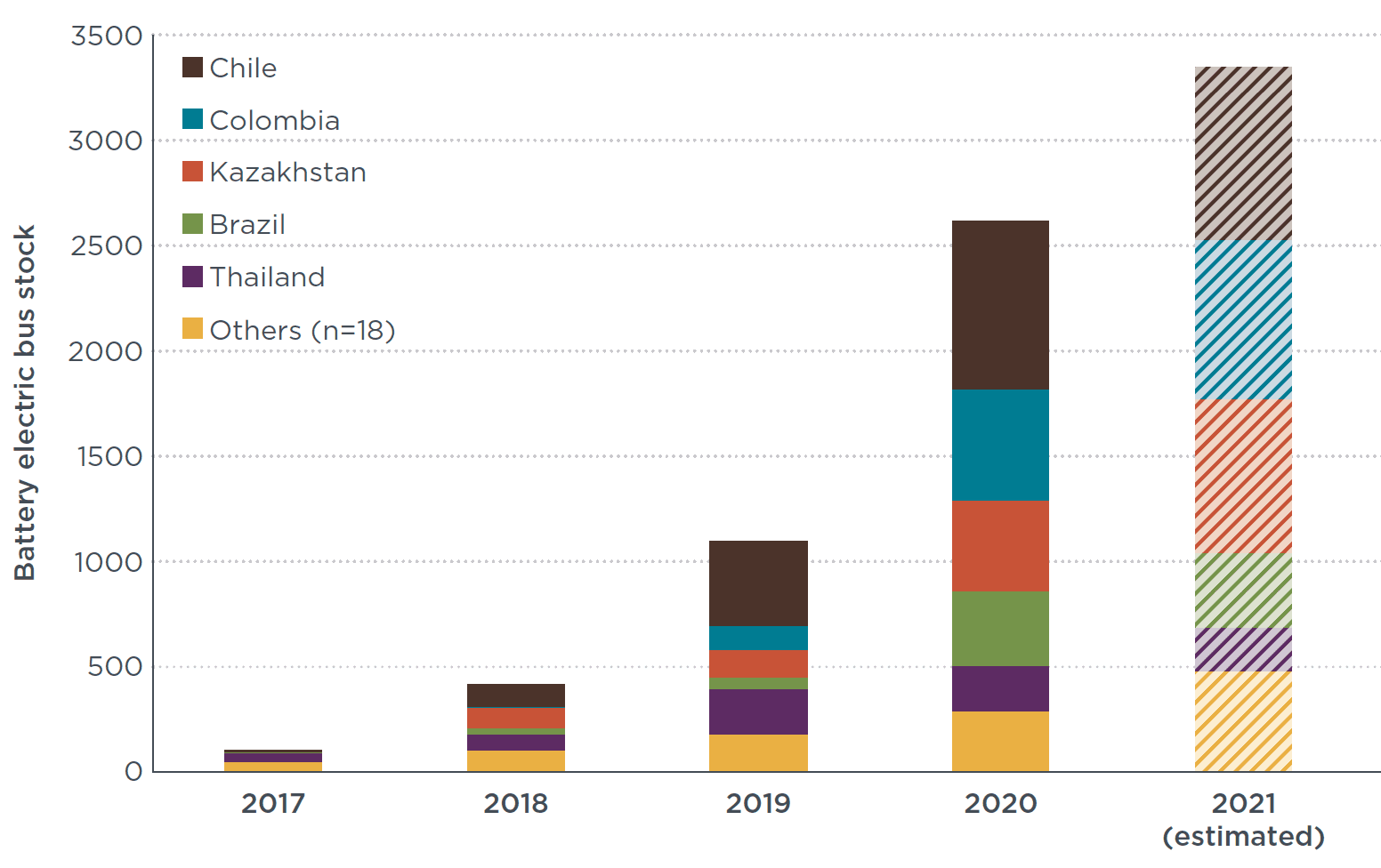Briefing
Electrification of heavy-duty vehicles in emerging markets
The objectives of this paper are to assess the status of zero-emission HDV deployment and policies in Emerging Markets and Developing Economies (EMDEs), evaluate the major policy levers for HDV electrification, and identify policy barriers and key recommendations for HDV electrification in the EMDEs. This briefing was originally produced and used to inform the Regional Dialogue meetings held in March and April, 2022 regarding HDV electrification.
Heavy-duty vehicles (HDVs) contribute a disproportionate share of emissions that destabilize the climate and jeopardize human health. By 2025, the global HDV fleet is projected to contribute more greenhouse gas emissions than the light-duty vehicle fleet. Zero-emission vehicle (ZEV) technology for HDVs, including battery electric vehicles and fuel-cell electric vehicles, has the potential to reduce significantly climate and air quality impacts, including in emerging markets and developing economies (EMDEs).
Similar to the HDV electrification trend in major vehicle markets, EMDEs are prioritizing public transport for electrification. This includes buses, which have great potential for electrification because they typically have consistent trip schedules and can be charged overnight at depots, reducing the need for a dense network of en route charging points. Moreover, electric buses are shown to be cost-effective (in terms of total cost of ownership) compared to internal combustion engine (ICE) technology in selected markets such as California, USA and Santiago, Chile, considering the typical functional lifetime of buses, which can range from 8 to 15 years depending on the market. Bus electrification can also advance decarbonization efforts because buses are a popular and affordable public transport mode and account for more than one-third of the HDV fleet, on average, in EMDEs. Therefore, this briefing focuses primarily on public transport, including bus electrification in EMDEs, while recognizing the opportunities to electrify other HDV segments with operational profiles similar to buses. Characteristics of those profiles, including predictable daily range, return-to-base operation, and long dwell time, are suited to depot charging, the charging practice commonly used by urban delivery vans, sanitation trucks, postal trucks, box trucks, and drayage trucks. (Figure.)

Figure. Stock of on-road battery-electric bus fleets for emerging markets and developing economies, 2017 to 2021.
Our policy recommendations fall into two broad areas: international support and collaboration activities. International finance and/or technical support can help to accelerate the transition to zero-emission HDVs in EMDEs, while regional and international collaboration can support leapfrogging to zero-emission HDVs across various segments. These broad areas were identified at the regional dialogues held in 2021 and emphasized by EMDE representatives. The recommendations are applicable for electric buses and other HDV segments with operational profiles similar to that of electric buses.
